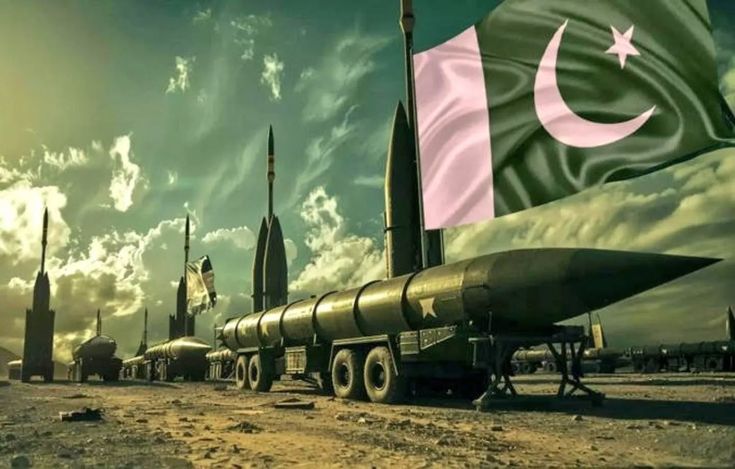On June 10, 2025, Pakistan’s newly announced federal budget was presented as a framework for economic recovery. Instead, it has left the country staring at a cold truth: this is not a recovery budget—it’s a retreat. From public welfare, social justice, and from the citizens who need the state the most.
With a ballooning defence budget, slashed development funding, and minimal investment in human welfare, the 2025–26 budget offers a stark reflection of where power lies in Pakistan—and who is being asked to fend for themselves.
An Alarming Defence–Development Imbalance
Defence spending in Pakistan has risen by a staggering 20% from last year, reaching PKR 2.55 trillion—or nearly USD 9 billion. When military pensions are included, the figure swells to PKR 3.29 trillion, making up around 19% of the total federal budget. This comes at a time when the government’s overall budget has actually shrunk—from PKR 18.9 trillion to PKR 17.57 trillion, a cut of approximately 7%.
In comparison, the Public Sector Development Programme (PSDP), which funds everything from schools to hospitals to clean drinking water projects, has been sharply reduced. Provinces like Balochistan and GB, already struggling with basic services, have seen their allocations stagnate or decline in real terms.
Pakistan’s defence spending now accounts for roughly 2.5% of GDP, a figure far higher than most developing nations. And while the military receives guaranteed yearly hikes, education and health barely register on the radar—consistently underfunded, overlooked, and left to decay.
The Real Human Cost
The consequences of this lopsided budget fall hardest on the very people the government claims to uplift.
Students and teachers, particularly in public schools and higher education institutions, face a dire future. The budget for the Higher Education Commission (HEC) has been slashed by over 30%, bringing it down to just PKR 45 billion. That cut means fewer scholarships, halted research grants, unpaid faculty, and declining infrastructure. For millions of students in remote areas like interior Sindh, South Punjab, and Gilgit-Baltistan, this isn’t just an inconvenience—it’s a dead end.
The health sector fares no better. While private hospitals flourish, public healthcare has been gutted. Total health spending remains below 1% of GDP—one of the lowest in South Asia. In rural Balochistan, pregnant women travel hours on foot to reach a clinic, only to find no doctors on duty. Children die of treatable diseases because vaccines don’t arrive on time. Health workers continue to operate without adequate protective gear or salaries.
For low-income families, the budget offers little more than scraps. Cash transfer programmes like the BISP remain underfunded and overburdened. There are no new plans for job creation, vocational training, or agricultural reform. In a country where nearly 40% of children are stunted and over 21% live below the poverty line, this budget is a betrayal.
The Illusion of “Economic Recovery”
Finance Minister Muhammad Aurangzeb optimistically projected GDP growth of 4.2%, riding on the back of a $7 billion IMF bailout. But in reality, nearly half the entire budget—PKR 8.2 trillion—is allocated to debt servicing. What little remains is swallowed by defence.
The idea of economic recovery, then, becomes a hollow slogan. How does a country “recover” while defunding schools, clinics, and rural development? What kind of progress sidelines the majority of its people?
There is no meaningful economic recovery without investing in human capital. And this budget does not even try.
Civil-Military Dynamics in Budgetary Form
This budget is not just a fiscal document—it’s a political statement. It cements the dominance of the military in Pakistan’s power structure. At a time when inflation is hovering around 22%, food insecurity is climbing, and Pakistanis are desperate for relief, the government has chosen to boost arms purchases and military salaries.
What makes this more troubling is the lack of parliamentary debate or public transparency around these increases. While teachers and nurses protest in the streets for overdue pay, defence contracts are signed without scrutiny.
This isn’t just about numbers—it’s about power. The military’s expanding footprint in everything from housing schemes to telecommunications is no longer subtle. This budget merely confirms what many already fear: civilian oversight is weakening, and military priorities are taking over.
Who’s Left Behind? A Regional Reckoning
In Balochistan, the country’s most resource-rich yet least developed province, people are still waiting for running water, electricity, and schools. This year’s budget allocates no major new infrastructure projects. Local voices, especially from the Makran coast and Khuzdar, have condemned the budget as a continuation of state neglect.
Gilgit-Baltistan, despite its strategic importance and tourism potential, receives minimal funds for health and education. Students still cross rivers and trek for hours to reach the nearest functional school.
In interior Sindh, the 2022 floods displaced hundreds of thousands. Yet flood management, sanitation, and agricultural recovery are notably missing from this year’s priorities. Without proper drainage and clean water, many residents are now facing waterborne illnesses and failing crops.
South Punjab, where poverty levels are some of the highest in the country, has long suffered from weak governance and underdevelopment. This budget makes no attempt to correct that. There are no new funds for maternal health, irrigation reform, or transport networks. Once again, the region is expected to wait.
A Blueprint for Abandonment
This is not a budget for growth. It is a budget for survival—of the state, not its people. At a time when Pakistan desperately needs investments in resilience, education, and health, it has chosen to prioritise military spending and debt repayments. The result is a country drifting further into inequality, alienation, and unrest. The people of Pakistan are not asking for miracles. They are asking for classrooms with teachers, hospitals with medicine, jobs with dignity, and a government that values their lives as much as its military might.
In 2025, that remains a distant dream.














